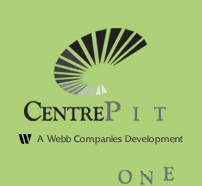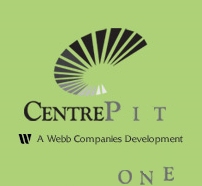 A few months back, I openly wondered about the viability of the CentrePointe project, which thus far has only managed to crater an entire city block of historical buildings.
A few months back, I openly wondered about the viability of the CentrePointe project, which thus far has only managed to crater an entire city block of historical buildings.
Since our post (which came long after the controversy started), there has been a continued flurry of discussion around CentrePointe in the community. But nothing has happened on the construction site.
In all of this turmoil, one fact has become crystal clear: CentrePointe will fail.
The project will fail in one of two ways:
- The project will fail to be constructed, or
- The project will be constructed, and then fail financially
I say this not out of emotion or disgust aimed at the project, the developers, the mayor, or their conduct (although all may be worthy of disgust) – but because the justifications for the project fail to stand up to basic business logic.
Instead of acknowledging the flaws in their business plans, CentrePointe’s developers have continually invoked wishful thinking to rationalize their actions.
I’ve seen this kind of fatal optimism in business many times before. Business executives often think they can make a project succeed by just wanting it badly enough. (Unfortunately, optimism isn’t a viable business strategy.) In their blind pursuit of their goal, they disregard the facts.
So, lets explore the facts around CentrePointe (‘CP’ from now on), which really can’t be ignored any longer. (Read more from the Herald-Leader here, here, and here.)
- CP has had an unnamed international financier who committed $250 million to the project. This week, we learned that the mystery investor died. Without a will. The project certainly won’t commence until a) the financier’s estate goes through probate court, and b) the heirs agree to continue support for CP. Odds the financier ever existed: Iffy. Odds heirs will support CP: Doubtful.
- CP is supposed to house a J.W. Marriott luxury hotel. Meanwhile, Marriott’s CFO (who is their soon-to-be CEO President and COO [correction]) has repeatedly announced that even the best projects – a group that CP cannot possibly belong to (see more below) – are stopped in their tracks. Odds Marriott will end up in CP: Doubtful.
- The Marriott would have 250 rooms going at $190 per night. The price is 50% higher than competing hotels, yet the developers’ analysts estimate occupancy rates at startup which are better than those (less expensive, more established) hotels. Odds of getting higher occupancy at a much higher price: Very slim.
- There are 91 luxury condos at the top of CP, which would sell for $1.2 million each and which would generate over $100 million for the project. The analysts estimated that 45 of those would sell before construction starts. And all 91 condos would be sold in 3 years. In all of Lexington, there were 31 million-dollar properties on the market at the end of 2008, and only 10 such properties sold during the entire year. So… CP’s developers would flood the market with luxury properties — essentially quadrupling the number that are on the market — and expect to sell them faster than historical rates. Odds that Lexington could absorb a 300% increase in ultra-luxury properties in only 3 years: Zero.
- CP’s developers have to sell 4.5 years (45 condos at 10 condos per year) worth of luxury property inventory before construction starts. And that assumes that every million-dollar prospect would prefer to live in a 2700-foot high-rise condo instead of a country estate. Odds that CP’s developers can sell 45 million-dollar condos before construction starts: Zero. (Note: This week, CP’s developer claimed that 61 of the 91 condos were ‘spoken for’. This is patently false, and reveals a worrisome desperation from the developers. Unless ‘spoken for’ means that someone said “I wish that I could live in a place like that…” Which is also worrisome.)
- CP’s analysts assumed that the $1.2 million condo buyers would have an average income of $220,000. That’s an incredibly aggressive price-to-income ratio of nearly 6, which ranks with inflated San Francisco, New York, San Diego, and Los Angeles averages – before the real estate bubble burst. Snakebitten banks are much more critical of an applicant’s ability to pay in this economic environment. Lexington’s average price-to-income ratio: 2.35 – indicating an income of over $500,000 to afford the condos and drastically limiting the pool of eligible buyers. Odds of finding enough eligible prospects in Lexington: Very slim.
So what are we to conclude about CentrePointe from these facts?
- The developers’ tendency toward secrecy and intrigue are unacceptable in light of the public investments in and public impacts from this project. We deserve transparency.
- The project is not financially viable.
- The primary financing (if it even exists) is shaky at best.
- The analysts’ projections are unrealistic and misleading.
- The project cannot generate the promised tax revenues.
- The developers are prone to either fantasy and/or outright deception; either case bodes poorly for the feasibility of the project.
- CentrePointe will fail. Miserably.
Lexington must now accept the failure of CentrePointe and begin to move beyond the CentrePointe fallacy. We must hold accountable those who recklessly ramrodded the flimsy development through our city council. We must prevent future irresponsible allocations of our common wealth. And our community and our public officials must begin carefully contemplating what’s next for the block that CentrePointe obliterated.
Update 4/13: Crossposted to Ace Weekly as “Optimism is Not a Business Strategy”
Update 4/14: Tom Eblen did an excellent parody of the CentrePointe situation here. Very cool.
Update 4/17: OK. Let’s just get the whole story out on the table. The UnTower Manifesto: What went wrong, what to do about it, and what to do about the scar it left on our city.
[where: E Main St & N Limestone St, Lexington, KY 40507]


I agree with this, and I just have one thing to add. Probably the biggest disappointment is the fact that Rosenberg let these properties go to the point it didn’t make sense to revive them. In the end, from a financial point, he feels he made the most money with the least investment. And perhaps he’s right. I just wonder what a bit more investment would have brought him and his heirs in the long run, both in terms of financial gain and in reputation.
I think the city / developers should be looking at economically viable alternatives at this point (beyond a block of mud).
I believe the brain-trust behind Centrepit was also behind Victoria Square / Festival Market? That worked out well for them. At least that was finished.
In hindsight it does feel like they rushed to bulldoze the existing structures before everything was properly lined up. I didn’t care for the preservationist argument for keeping the existing structures – I just think it would be better to have something there vs. a unfinished development.
I see the hotel making it – with more reasonable projections – but the condo part was ridiculous to start. When I was in Lexington I think I was on the “spoken for” list for 3 different condo developments, and was only planning on buying one – at a much lower price point.
Maybe they can level the lot and put sod down.
Or maybe it could be the future location of Lowell’s automotive 🙂 Downtown – Be There!
I kinda hope it was all a grand conspiracy… that there never was a tower in the works, but that everyone decided that eyesore of a block finally needed to go, and they just needed a borderline plausible excuse.
A little grass seed, and suddenly we have a town commons!
Speaking of conspiracy, though, I suspect the real reason for the delay is the ongoing petty rivalry between the Webbs and Jim Gray.
Pingback: The Tombstone at CentrePointe | CivilMechanics
Pingback: The CentrePointe Scam | CivilMechanics
Pingback: The UnTower Manifesto: 1. Truth – CivilMechanics
Pingback: The Promise (and Predicament) of CentrePointe – CivilMechanics